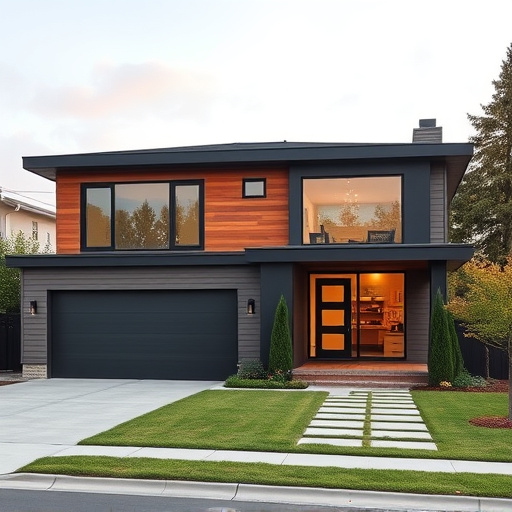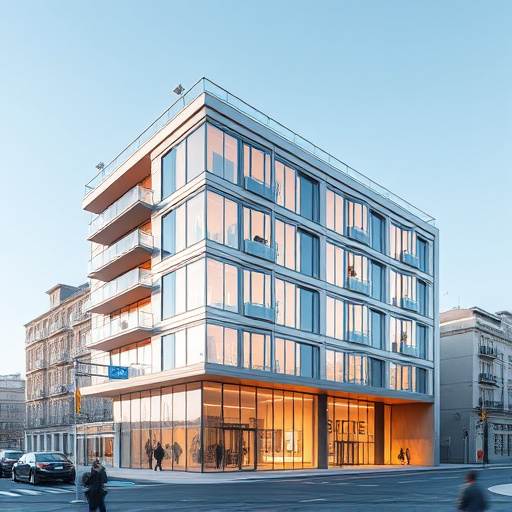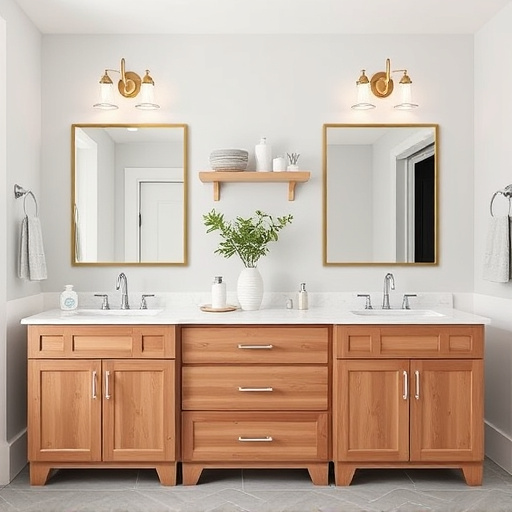In today's dynamic workplace with remote work and hybrid schedules, dedicated quiet zones in office design are crucial for enhancing focus, productivity, and employee satisfaction. Blurring personal-professional lines necessitates spaces promoting concentration while minimizing distractions. Incorporating natural elements, calm areas for reading or meditation, thoughtful layout planning, and sound-absorbing materials creates a relaxing office design atmosphere. Optimizing lighting contributes to personalized workspaces, reducing stress levels, improving concentration, and increasing job satisfaction. Implementing quiet zones through careful planning, privacy, visual comfort, and varied seating offers tailored work areas through residential renovations and home improvement services.
In today’s fast-paced work environments, creating quiet zones in office design has become essential. Understanding the need for these calming spaces is paramount as it enhances productivity, reduces stress, and fosters better collaboration. This article delves into effective strategies to incorporate quiet zones, from architectural design choices to furniture selection and sensory considerations. We explore benefits and best practices, guiding you to create peaceful sanctuaries within your office space that elevate the overall employee experience.
- Understanding the Need for Quiet Zones in Office Design
- Strategies to Create Calming Spaces within the Office Environment
- Benefits and Best Practices for Implementing Quiet Zones
Understanding the Need for Quiet Zones in Office Design

In today’s fast-paced work environment, where remote work and hybrid schedules are becoming the new norm, recognizing the importance of dedicated quiet zones in office design is more crucial than ever. The traditional open-concept layout, though popular for its collaborative benefits, often falls short in catering to the diverse needs of a modern workforce. Employees require spaces that foster concentration and minimize distractions, especially as remote work has blurred the lines between personal and professional lives. By incorporating designated quiet zones into office design concepts, businesses can create environments that support focus, enhance productivity, and ultimately improve employee satisfaction.
This need is further underscored by the increasing demand for home improvement services and multiple room remodel projects. Many professionals are now working from home, where they must juggle family life and work responsibilities. A well-designed office space, whether in a corporate setting or at home, should accommodate these changing dynamics by providing dedicated areas tailored to different tasks and preferences. Home renovation projects can greatly benefit from incorporating quiet zones, ensuring that workers have peaceful retreats within their living spaces, thereby promoting better work-life balance and overall well-being.
Strategies to Create Calming Spaces within the Office Environment

Creating calming spaces within an office environment is a strategic approach to enhancing employee well-being and productivity. One effective strategy is incorporating natural elements such as plants, water features, or even small gardens into the office design. These additions not only introduce tranquility but also improve air quality, which can significantly impact overall comfort. Additionally, designing specific zones dedicated to quiet activities like reading, meditation, or private conversations helps create a sense of peace and focus.
Another important aspect is controlling noise levels through thoughtful layout planning. This can include positioning collaborative spaces away from high-traffic areas, using sound-absorbing materials in meeting rooms, and incorporating acoustic paneling to reduce echo and unwanted noise. Similarly, optimizing lighting with natural daylighting techniques and adding adjustable illumination options allows employees to create their preferred ambiance, contributing to a more relaxing atmosphere. These strategies collectively transform the office into a harmonious blend of productivity and tranquility.
Benefits and Best Practices for Implementing Quiet Zones

Creating quiet zones within office design concepts offers a multitude of benefits for employees and overall productivity. These designated areas provide much-needed respite from the constant buzz and noise, fostering a sense of calm and focus. In today’s fast-paced work environment, where multitasking and digital distractions are prevalent, having dedicated quiet spaces can significantly enhance mental well-being and cognitive function. Studies show that employees who have access to such zones experience reduced stress levels, improved concentration, and increased job satisfaction.
Implementing quiet zones in office design requires careful planning and consideration of layout, soundproofing, and furniture choices. Best practices include integrating these spaces seamlessly into the overall office layout, ensuring adequate privacy and visual comfort, and offering a variety of seating options to cater to different preferences. Customized work areas, such as private nooks or collaborative pods, can be tailored to specific needs through residential renovations and home improvement services, creating an environment that supports both individual productivity and team interactions in unique ways.
Incorporating quiet zones into office design concepts is a strategic move towards enhancing employee productivity, well-being, and overall job satisfaction. By understanding the need for these calming spaces and implementing effective strategies, offices can create environments that foster focus and reduce stress. The benefits of quiet zones are multifaceted, from improved mental health to increased creativity and collaboration. Best practices include thoughtful placement, diverse noise-cancelling features, and integrating natural elements. Embracing these design concepts not only transforms the office landscape but also contributes to a more harmonious and productive workplace.














